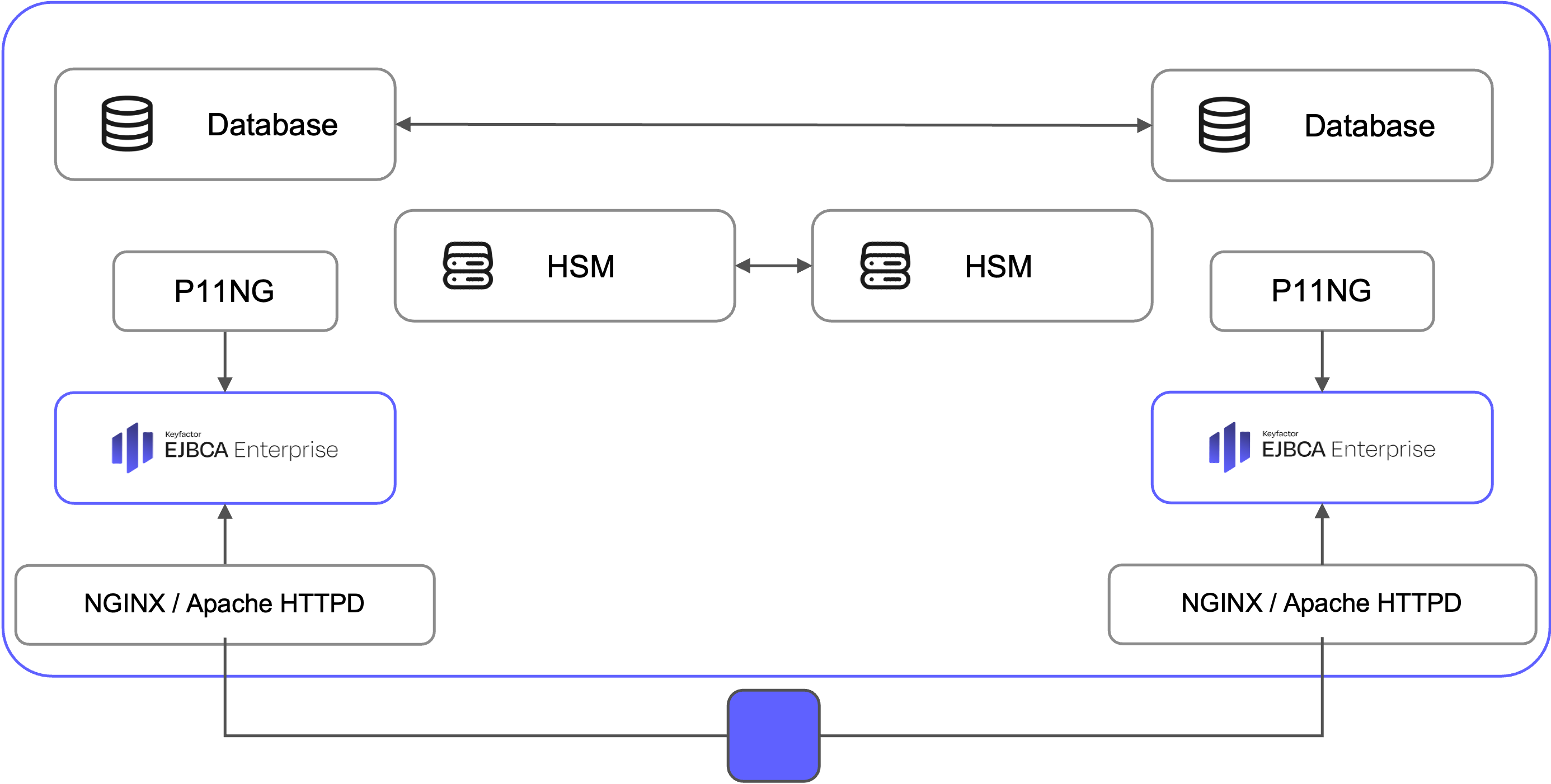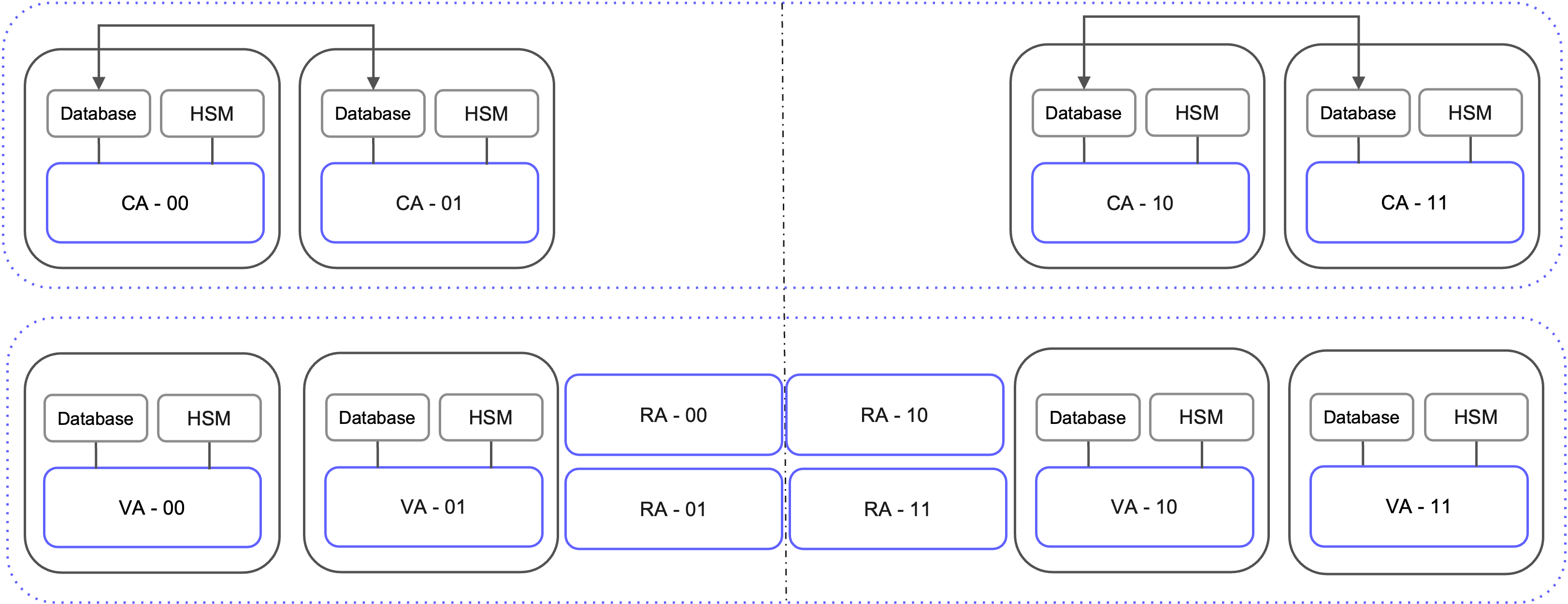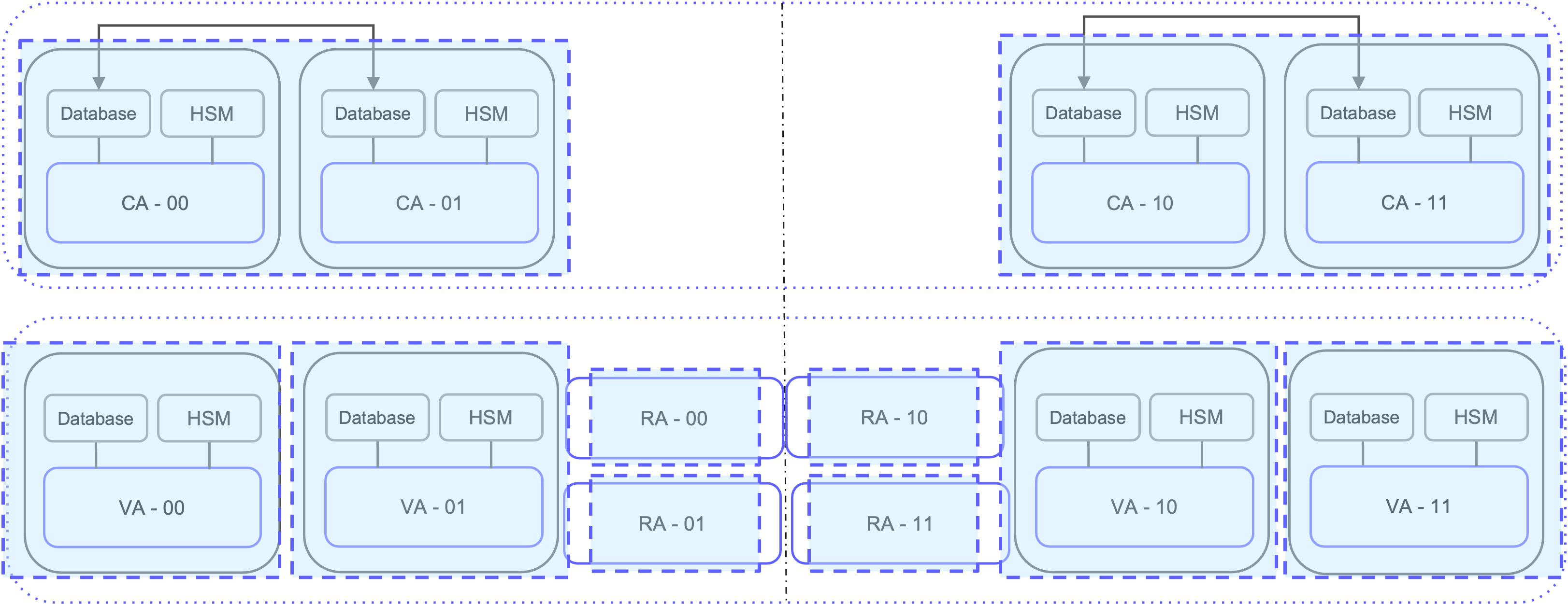High-Availability Multi-Region Deployment of EJBCA with Helm
ENTERPRISE
Organizations operating in regulated environments and at scale require a resilient, secure, and highly available Public Key Infrastructure (PKI) to support their applications. This solution area explores how to deploy EJBCA using Helm in a multi-region, high-availability (HA) setup, ensuring robust certificate lifecycle management across distributed environments.
Designed for platform engineers, security architects, and IT teams managing PKI infrastructure, this guide provides insights into architectural considerations, role separation, scaling strategies, and security best practices. By following this approach, organizations can enhance redundancy, fault tolerance, and automation while streamlining management through Helm.
This solution area explores the architecture of EJBCA deployments, starting with a single-region cluster and progressing toward a multi-region, high-availability deployment. We cover concepts for scalability, redundancy, and best practices for building a resilient and secure infrastructure.
Single-Region Cluster
In a single-region deployment, multiple EJBCA instances are deployed to communicate with replicated databases and Hardware Security Modules (HSMs).

Typically, multiple EJBCA instances connect to a replicated database to ensure redundancy, where the database may be in Kubernetes or external, for example, managed by a cloud provider.
Key security and redundancy are in turn provided by a replicated HSM cluster managed by the P11NG sidecar.
End-to-end encryption is maintained through TLS termination at the pod level by a load balancer service. Alternatively, an Ingress controller may handle TLS termination and traffic routing.
Multi-Region High-Availability Deployment
For a multi-region HA deployment, role/responsibility separation is critical.

In a multi-region HA deployment, responsibilities are separated along common roles:
Certificate Authority (CA) cluster: Handles certificate issuance and signing.
Validation Authority (VA) cluster: Manages certificate validation via CRLs and OCSP.
Registration Authority (RA) cluster: Acts as a lightweight proxy for processing certificate requests.
A cluster of each type is deployed in every region, and each CA cluster is connected to peer clusters in all regions.
Best Practices
Best practices for multi-region HA deployments include:
Deploy clusters in separate namespaces for security and network segmentation.
Maintain at least two instances per role for redundancy in each region.
Use a replicated HSM for the CA cluster.
Leverage the EJBCA Peer Connector to establish links between peers.
Scaling and Availability
In addition, this architecture enables scaling and ensures fault tolerance for CA, RA, and VA components across multiple regions:
CA and VA instances use auto-scaling, while RA components remain lightweight.
Database replication ensures that CA instances remain synchronized across regions.
Load balancing improves database availability within each region.
Database instances in each region can be load-balanced to improve availability.
Each cluster type in each region is configured with auto-scaling.
CA clusters are connected to RA/VA clusters in every region.
CA-to-RA connections ensure registration requests are processed even during regional failures.
CA-to-VA connections ensure VAs remain aware of issued certificates across regions.
Cross-region failover enables seamless continuity by automatically shifting workloads if a region fails.
Deployment with Helm
Deployment is streamlined using Helm, with each CA, VA, and RA component managed via separate Helm charts. Helm simplifies installation, scaling, and lifecycle management, making it easier to maintain a robust and scalable PKI infrastructure.
For EJBCA Helm:
Each type of installation (that is CA/RA/VA in each region) is part of a separate Helm release.
Each peer instance is part of a separate release.

Each dotted box in the diagram represents a Helm release, managed using the helm install or helm upgrade command.
Conclusion
A multi-region, high-availability deployment of EJBCA provides the scalability, resilience, and security needed for organizations that rely on PKI to protect their digital ecosystems. By leveraging Helm for deployment, organizations can streamline installation, automate scaling, and ensure seamless management of certificate authorities (CAs), validation authorities (VAs), and registration authorities (RAs).
This approach minimizes downtime, enhances fault tolerance, and ensures that critical security services remain available even in the event of regional failures.
Related Content
Deeper integrations, optimizations, and advanced security configurations to further enhance PKI resilience and operational efficiency:
For a tutorial video on deploying EJBCA with Helm and multi-region setup, watch our video High-Availability Multi-Region PKI Deployment with EJBCA and Helm.
To quickly get started with EJBCA in your Kubernetes cluster using Helm charts, refer to our Quickstart guide.
For an overview of the EJBCA Container Set and resources that can be customized to be deployed alongside EJBCA, review the EJBCA Container Set Overview.
For detailed setup instructions and advanced configurations, refer to the EJBCA Container Set documentation.
.png)